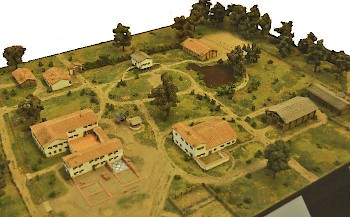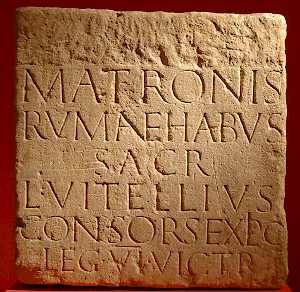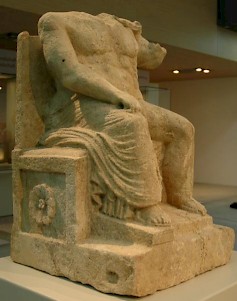Iuliacum (Jülich)
Q1564137
Iuliacum was a small town along the main road from Tongeren, the capital of the Tungri, to Cologne, the capital of Germania Inferior. The town originally belonged to the tribe of the Eburones, and went into decline when Julius Caesar exterminated these people after the insurrection of Ambiorix (winter 54/53): pollen research shows that forest vegetation increased after c.50 BCE.

It appears to have been in c.10 CE that the area was cleared again and used as pasture. The element -acum indicates that the town was already occupied when one of the first Roman governors organized the province in tax districts: this was the district of someone named Julius. This early occupation is logical, because the loess is fertile and archaeologists have shown that there were many large farms.
The town, called Jülich today, was situated east of the crossing of a small river, the Rur (which is not to be confused with the Ruhr), and there must have been a bridge. A tile from Sixth legion Victrix proves that soldiers guarded the river crossing. The inscription can be dated after the arrival of this unit to suppress the Batavian revolt (in 70) and before 121, when it was transferred to Britain.

Iuliacum is mentioned on the Peutinger map, which means that it was a settlement of some significance in the fourth century. This is confirmed by the archaeological record, which shows that at the beginning of the fourth century, Iuliacum was fortified with a mighty, fourteen-sided wall. According to the Roman historian Ammianus Marcellinus.note the castle was still in use in 357, when the area was plundered by a large group of Frankish cavalry. The fort may have been used for an additional half century.
Among the archaeological finds from ancient Iuliacum is a fine statue of Jupiter, seated on his throne, made of sandstone. Stylistically, it can be dated to the first quarter of the third century. Once, it must have graced a column in the court of a villa.